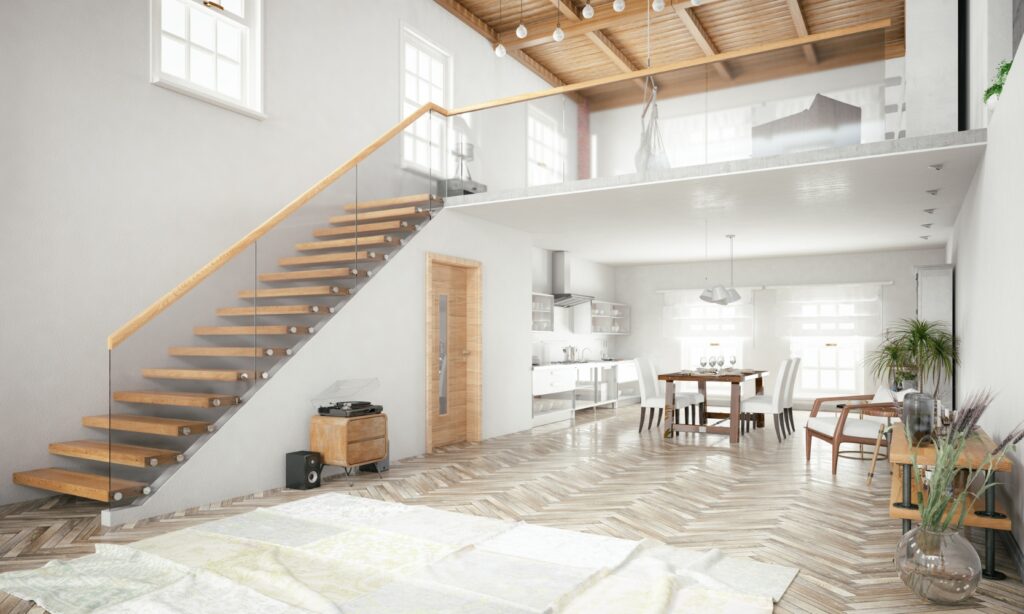
Choosing the right apartment can be a daunting task, especially when faced with seemingly similar options. Two popular choices often cause confusion: lofts and studios. While both offer unique living experiences, understanding their distinct characteristics is crucial for making an informed decision. This article delves into the difference between loft and studio apartments, exploring their defining features, advantages, and ultimately helping you determine which best suits your lifestyle and needs.
We’ll begin by outlining the key distinctions between lofts and studios, then delve deeper into the characteristics that define each type of apartment. Next, we’ll explore the benefits of living in a loft and the advantages of choosing a studio. Finally, we’ll summarize the key takeaways to help you confidently navigate your apartment search.
Loft Apartments vs Studio Apartments
At first glance, lofts and studios might appear similar due to their open floor plans. However, there are fundamental differences that set them apart. Lofts typically occupy larger spaces with higher ceilings, often featuring exposed brickwork, ductwork, or other industrial elements. Studios, on the other hand, are smaller, single-room units where living and sleeping areas are combined.
While both offer a sense of spaciousness, lofts tend to provide more room for movement and furniture arrangement. Studios, while compact, can be surprisingly functional with clever design solutions and storage options. Ultimately, the difference between loft and studio boils down to personal preference, lifestyle, and space requirements.
Defining Loft Apartments
Loft apartments are characterized by their unique blend of industrial aesthetics and modern living. They often occupy former warehouses or factories, retaining original architectural features like exposed brick walls, high ceilings, large windows, and open floor plans.
Key Features of Loft Apartments:
- High Ceilings: Lofts typically boast soaring ceilings, creating a sense of grandeur and spaciousness.
- Open Floor Plans: The absence of interior walls allows for flexible living arrangements and an airy feel.
- Industrial Elements: Exposed brickwork, ductwork, and metal beams contribute to the loft’s distinctive industrial charm.
- Large Windows: Lofts often feature expansive windows that flood the space with natural light.
Defining Studio Apartments
Studio apartments are compact living spaces where the bedroom, living room, and kitchen areas are combined into a single room. They offer a minimalist approach to living, prioritizing functionality and affordability.
Characteristics of Studio Apartments:
- Single Room Layout: The entire apartment consists of one open space, which serves as both living and sleeping area.
- Compact Size: Studios are typically smaller than other apartment types, making them ideal for individuals or couples seeking a minimalist lifestyle.
- Efficient Design: Studios often feature clever storage solutions and multi-functional furniture to maximize space utilization.
- Affordable Rent: Studio apartments generally command lower rental rates compared to larger units.
Loft Apartment Benefits
Living in a loft offers several distinct advantages, particularly for individuals who value spaciousness, unique aesthetics, and a sense of community.
- Spacious Living: Lofts provide ample room for movement and furniture arrangement, creating a more comfortable living experience.
- Industrial Chic Aesthetic: The exposed brickwork, high ceilings, and open floor plans contribute to a stylish and contemporary industrial aesthetic.
- Natural Light: Large windows often found in lofts allow for abundant natural light, brightening the space and creating a welcoming atmosphere.
- Strong Sense of Community: Loft buildings often feature shared amenities like rooftop decks or communal spaces, fostering a sense of community among residents.
Studio Apartment Advantages
Studio apartments offer several benefits that appeal to individuals seeking affordability, simplicity, and low-maintenance living.
- Affordability: Studios typically have lower rental rates compared to larger apartment types, making them an attractive option for budget-conscious renters.
- Minimalist Lifestyle: The compact size encourages a minimalist approach to living, promoting organization and reducing clutter.
- Easy Maintenance: With less space to clean and maintain, studios require less effort and time commitment compared to larger apartments.
- Ideal for Singles or Couples: Studios are well-suited for individuals or couples who prioritize intimacy and shared living spaces.
Conclusion
Choosing between a loft and studio apartment ultimately depends on your individual needs, lifestyle preferences, and budget. Lofts offer spaciousness, industrial aesthetics, and a sense of community, while studios provide affordability, minimalist living, and low maintenance. By carefully considering the advantages and disadvantages of each type, you can make an informed decision that aligns with your desired living experience.
